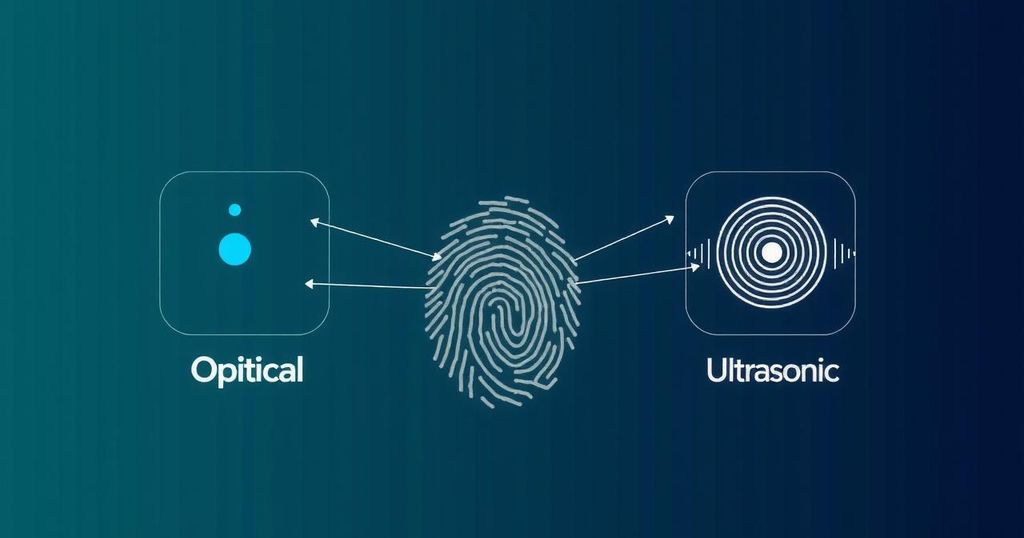Summary
Fingerprint scanners are pivotal in modern smartphones, employing optical, capacitive, and ultrasonic technologies for user authentication. Optical scanners capture 2D images, while capacitive scanners analyze electrical changes for enhanced security. Ultrasonic scanners create a detailed 3D fingerprint map using sound waves, offering high security but with some practical limitations. In-display technologies allow for a sleeker smartphone design while maintaining functionality, indicating a trend towards secure and user-friendly biometric systems.
Fingerprint scanners have evolved into a prominent security feature in numerous smartphones, enhancing user experience through various technology types. The main categories of fingerprint scanners include optical, capacitive, and ultrasonic types, each with unique features and security measures. Optical Fingerprint Scanners: The oldest technology, optical fingerprint scanners capture a 2D image of a fingerprint using light. They analyze patterns based on contrasts of light and dark areas within the image. Although optical scanners are widely available due to their cost-effectiveness, their major vulnerability is their susceptibility to replication through images or prosthetics, making them less secure for sensitive applications. Capacitive Fingerprint Scanners: Capacitive scanners utilize arrays of capacitors to create a detailed image based on the electrical charge changes that occur when a finger’s ridges overlay the sensor. This technology proves more secure than optical scanners because it cannot easily be fooled by replicas. Furthermore, capacitive scanners have advanced to include gesture and swipe functionalities, adding versatility to their use. However, their production costs can be high due to the intricate sensor design. Ultrasonic Fingerprint Scanners: The latest innovation in fingerprint technology is ultrasonic scanning, which captures 3D fingerprints using high-frequency sound waves. This method not only scans the ridges but also pores in the fingerprint, creating a detailed three-dimensional map. Although highly secure, ultrasonic scanners can have compatibility issues with screen protectors and aren’t as quick as their optical or capacitive counterparts. In-display Technology: Both optical-capacitive and ultrasonic scanners can be integrated into the smartphone display, creating a sleeker design with fewer visible features. Optical-capacitive scanners utilize light reflections to identify fingerprints, while ultrasonic scanners convert sound waves into data. Each technology offers advantages and disadvantages, determining their use in mid-range versus premium smartphones. Security Measures in Fingerprint Systems: To ensure the safety of fingerprint data, manufacturers implement secure processing units or trusted execution environments that store biometric data separately from other app accesses. This segregation prevents unauthorized access, enhancing user privacy. The FIDO protocol allows password-less services without transmitting sensitive biometric data over the internet, maintaining security.
Fingerprint scanning technology has become ubiquitous in modern smartphones, evolving from basic identification methods to advanced security measures. These scanners not only serve as a means of unlocking devices but also play a crucial role in mobile payment systems and identity verification processes. As their adoption increased, the need for more sophisticated and secure scanning technologies arose, leading to the development of optical, capacitive, and ultrasonic solutions. Understanding the capabilities and limitations of each type is essential for users seeking reliable security from their devices.
In summary, fingerprint scanners have transformed into intricate security devices that balance usability and security across different smartphone ranges. Optical scanners are prevalent but less secure; capacitive scanners offer enhanced security with added functionalities; ultrasonic scanners promise advanced detail capture but face speed and compatibility challenges. Collectively, these technologies showcase a continuous drive toward improved biometric security, ensuring their relevance in an increasingly digital world.
Original Source: www.androidauthority.com





